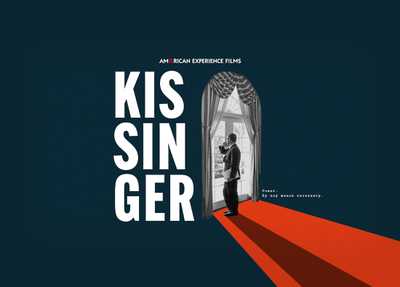Timeline: Eugene O'Neill chronology

1877
June: James O'Neill, an established stage actor, marries Mary Ellen "Ella" Quinlan in New York. Later in the year a woman named Nettie Walsh files suit against James for divorce, contending they had been married in August 1871 and had a son together.
1883
February 12: James O'Neill debuts as the lead actor in The Count of Monte Cristo. Lured by the play's commercial success, he will give more than 6,000 performances over three decades in the role that defines his career.
1885
March 4: Edmund O'Neill, the 1-1/2-year-old child of James and Ella O'Neill, dies of the measles. Ella blames her older son, Jamie, for the death, believing that he intentionally exposed his brother to the disease.
1888
October 16: Eugene Gladstone O'Neill is born in a Broadway hotel room in what will later be known as New York's Times Square. Ella O'Neill takes morphine to ease the pain of delivery, beginning a longtime addiction to the drug.
October 18: Two days after his son's birth, James O'Neill resumes his tour in The Count of Monte Cristo. As an infant, Eugene will join his father on tour, where he spends much of his early years.
1895
September: Eugene O'Neill enters the strict Catholic boarding school St. Aloysius Academy for Boys. He will leave the Catholic Church as a teenager and never return.
1906
September 20: O'Neill enrolls at Princeton University.
1907
June: After a brief college career marked by drinking and womanizing, O'Neill is kicked out of school "for poor scholastic standing." He moves to New York, where he continues drinking and carousing with his brother Jamie.
1909
October 2: O'Neill marries Kathleen Jenkins in a secret ceremony in Hoboken Trinity Church. Soon after, he sets sail for Honduras, on one of several long sea voyages he will take in the coming years. Kathleen will give birth to a son, Eugene O'Neill Jr., before the couple divorce in 1912.
1912
Drinking heavily and living at Jimmy-the-Priest's boarding house and saloon in New York, O'Neill attempts suicide. In 1919 he will write Exorcism, a one-act play based on the suicide attempt.
O'Neill contracts tuberculosis and is inspired to become a playwright while reading during his recovery.
1916
O'Neill joins a group of young writers and painters who launch an experimental theater in Provincetown, Massachusetts. They produce his first one-act play, Bound East for Cardiff, one of many plays he will write about sailors or life at sea. The play debuts in New York on November 3.
1918
April 12: O'Neill marries the writer Agnes Boulton. They will have two children, Shane and Oona, before O'Neill leaves Agnes for Carlotta Monterey, who will become his third wife.
1920
February 3: O'Neill's first full-length play, Beyond the Horizon, is produced on Broadway at the Morosco Theater. The play will win a Pulitzer Prize, the first of three in O'Neill's lifetime.
August 10: James O'Neill dies in New London, Connecticut, after confiding to Eugene that The Count of Monte Cristo cursed his career as an actor.
December 27: O'Neill's The Emperor Jones, which follows the destruction of an ex-Pullman porter who has seized control of a West Indian island, opens on Broadway. It features Charles Gilpin, the first African American to play a major role in a white American company.
1922
February 28: Ella O'Neill dies in California of a brain tumor. His parents now deceased, O'Neill will soon begin to write about them through the characters in his plays.
May 21: Anna Christie, a play about a prostitute returning to her seafaring father and falling in love with a sailor, is awarded a Pulitzer Prize, O'Neill's second.
1923
November: An alcoholic and broken man, Eugene's older brother Jamie O'Neill dies after being taken to a sanitarium in an advanced state of delirium tremens. Eugene will base his play A Moon for the Misbegotten, which he will write two decades later, on the last days of his brother's life.
1924
November 11: Desire Under the Elms, about a woman who cements her bond to her stepson-lover by murdering their baby, premieres at the Greenwich Village Theater. The play by O'Neill has been called "the first important tragedy to be written in America."
1928
O'Neill wins his third Pulitzer Prize for Strange Interlude, a play in nine acts that catalogues the life of a woman, from the death of her fiancé to her listless marriage. The play earns him $275,000 and later is made into a movie starring Norma Shearer.
1929
July 22: O'Neill marries Carlotta Monterey. She will remain his wife and protector until his death 24 years later.
1931
O'Neill completes one of his most ambitious works, Mourning Becomes Electra, for which he adapts the Greek tragic myth Oresteia to 19th-century New England.
1933
October 2: Ah, Wilderness!, the only comedy O'Neill will write, opens at the Guild Theatre on Broadway.
1936
November 12: O'Neill is awarded the Nobel Prize in literature, becoming the first — and only — American dramatist to win the honor.
1939
O'Neill writes The Iceman Cometh, one of his most acclaimed tragedies. Set in a dive bar in New York, the play concerns the "pipe dreams" of a group of drunken derelicts.
1941
O'Neill completes Long Day's Journey Into Night, his best-known play, and arguably America's greatest, which dramatizes the embattled relationship of his parents during a wrenching day in the life of his family.
1943
June 16: O'Neill's daughter Oona, at 18, marries film star Charlie Chaplin, who at 54 is about the same age as her father. Eugene O'Neill rejects the marriage and will never see his daughter again. Oona and Chaplin will have eight children together and remain married until his death in 1977.
1945
November 29: Delivering the text of Long Day's Journey Into Night to Random House in New York, O'Neill insists that the play must not be published until 25 years after his death.
1946
October 9: The Iceman Cometh opens on Broadway. It is the last Broadway production of an O'Neill play during his lifetime.
1948
August: Shane O'Neill is arrested and pleads guilty to heroin possession, receiving a two-year suspended sentence. Eugene O'Neill never again has contact with his younger son.
1950
September: Eugene O'Neill Jr. commits suicide. His note reads: "Never let it be said of O'Neill that he failed to finish a bottle." His father, in failing health, does not attend the funeral of his oldest child.
1953
November 27: Suffering from a neuromuscular disorder that has robbed him of the ability to write, O'Neill dies in the Shelton Hotel in Boston. He has written 50 plays and seen 35 of them produced.
1956
February: Yale University Press publishes Long Day's Journey Into Night. Carlotta takes the manuscript to Yale after Random House adheres to O'Neill's instruction not to publish the play until 25 years after his death.
November 7: Long Day's Journey Into Night opens at the Helen Hayes Theatre in New York. The playwright will be recognized with a posthumous Pulitzer Prize.
1957
May 2: A Moon for the Misbegotten, O'Neill's play about his brother's final days, debuts at the Bijou Theater in New York.
1967
More Stately Mansions, an unfinished manuscript O'Neill thought he had destroyed, is finished by others and produced on Broadway as — misleadingly — "a new play by Eugene O'Neill." Although it stars Ingrid Bergman, it is not a hit.
1976
October 19: President Gerald Ford signs a bill into law authorizing the establishment of the Eugene O'Neill National Historic Site at Tao House in Danville, California. O'Neill wrote his masterpieces, The Iceman Cometh, Long Day's Journey Into Night and A Moon for the Misbegotten while living at the site from 1937 to 1944.
1979
December 29: The Eugene O'Neill Society, a scholarly and professional organization devoted to the promotion and study of the playwright's life and works, is formed.







